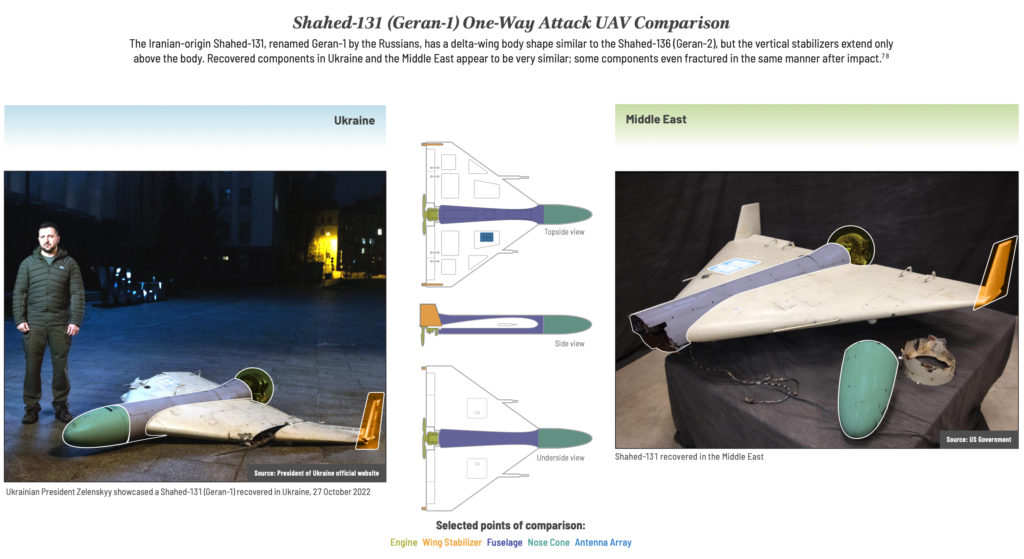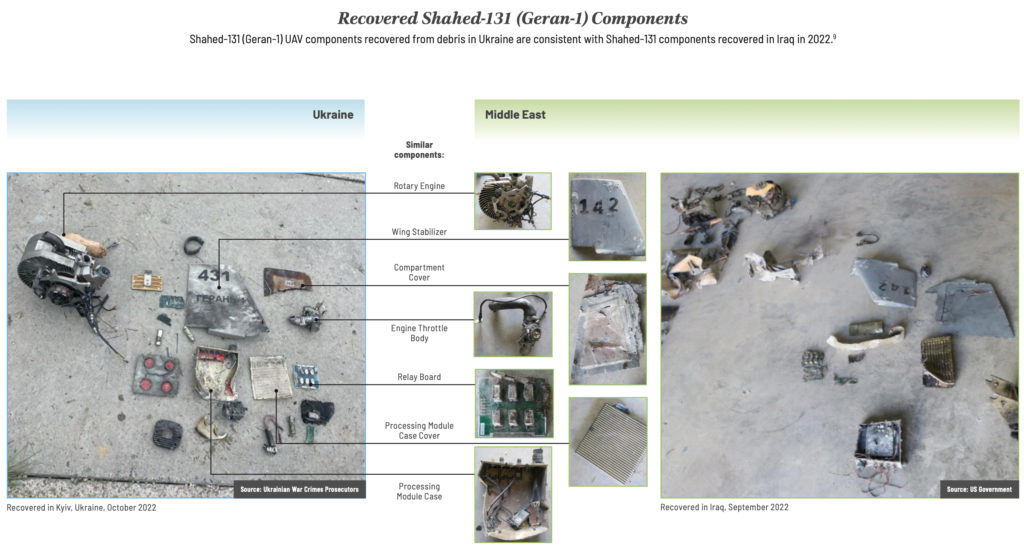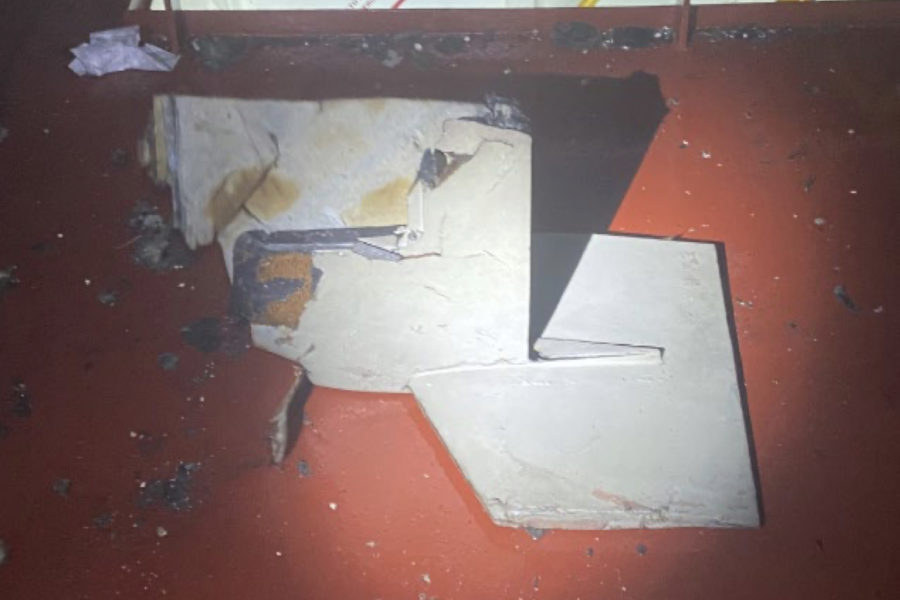A new report from the Defense Intelligence Agency confirms the drones Russia has used to terrorize Ukrainian cities and pound the country’s infrastructure have been provided by Iran.
Russia has renamed the drones it acquired from Iran, but by drawing on declassified images and publicly available photos, the DIA report shows that Russia has carried out attacks in Ukraine with the same types of unmanned aerial vehicles Iran has used in the Middle East.
Part of what has made the drones used in Ukraine easy to link to Iran is their novel appearance.
“The Iranian-origin Shahed-136, renamed Geran-2 by the Russians, has a distinctive shape, with a delta-wing body and vertical stabilizers extending above and below the body, as displayed in Iranian press and military expos,” the DIA report noted, referring to the one-way attack drone.
“The images circulating in open press of UAVs in Ukraine clearly show the features of the Shahed-136’s delta-wing body and vertical stabilizers,” the report said.
Components of Shahed-136 drones have been recovered in Ukraine, which has enabled DIA to determine it is the same type of UAV Iran has transferred to the Houthis in Yemen and used in a 2021 attack on a merchant vessel. Engine components from drones recovered in Ukraine are of the same type used by Iranian drones, and the DIA found that a recovered Shahed-136 used in Ukraine had an Iranian-made MD-550 engine. The MD-550 is based on a German design, and its use in Iranian drones has been previously documented.

The Shahed-131, a one-way attack drone that the Russians have renamed Geran-1, is similar to the Shahed-136 but of a smaller size. The DIA noted the drones used in the Middle East and Ukraine were so similar that “some components even fractured in the same manner after impact.”


Ukraine, the report noted, also recovered a largely intact Mohajer-6 from the Black Sea. That multirole drone, the DIA said, appears to be identical to Iranian systems photographed in Iran and Iraq.
The U.S. accused Iran in October of providing the drones and sending trainers into Russia-occupied Crimea to train Russian forces on how to use them.
Iran initially denied the allegation. Tehran later claimed that the drones it sent were provided before the renewed invasion of Ukraine in February 2022. But the U.S. says the drones are being provided as part of an ongoing arrangement.
In December, National Security Council strategic communications coordinator John Kirby said Russia and Iran had established “a full-fledged defense partnership” that could lead to the production of drones in Russia. Iranian media has claimed Iran might even receive fighter jets from Russia.
Air Forces Central (AFCENT) commander Lt. Gen. Alexus G. Grynkewich addressed his growing concern over Iran’s drone supplies at an AFA Warfighters in Action event Feb. 13.
“It’s disconcerting to me that that kind of capacity and capability is being supplied to Russia for the war in Ukraine and I don’t see that changing anytime soon,” Grynkewich said. “Russians are going to continue to want to purchase those drones. The Iranians are going to continue to want to sell them.”
In addition to fueling Russia’s invasion of Ukraine, Grynkewich expressed concerned Iran’s military capabilities in the Middle East will grow due to its partnership with Russia.
“The other interesting dynamic is in a way it is flipped,” Grynkewich said. “Who is the client state and who is the benefactor? I never thought that I would see when Russia was beholden in some way to the Islamic Republic of Iran, but that is kind of the dynamic that you have.”
Yet another worry is that the military collaboration between Russia and Iran will lead to closer coordination between Russia and Iranian forces in Syria, where the U.S. still has about 900 troops to support the ongoing fight against remnants of the Islamic State as part of Operation Inherent Resolve.
“Both the Russians and the Iranians are trying to maintain or gain a bigger foothold,” Grynkewich said. “We haven’t seen that kind of cohesion between the two sides come together yet, but I think it’s only natural at some point that those kinds of conversations will be going on their side.”
